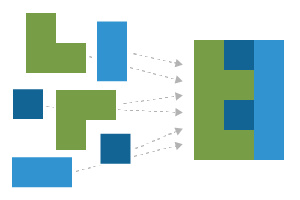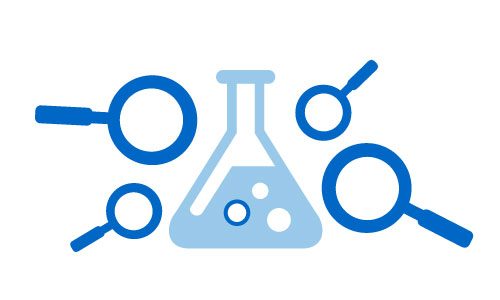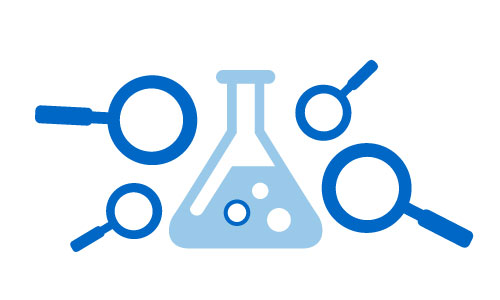There are many complexities involved with incorporating a data management platform into your workflow, but terminology shouldn’t be one of them! This quick guide to LabKey Server standard terms will have you speaking LabKey in no time.
User Interface Terms
Web Part – A user interface panel designed for specific functionality. Examples: file management panel, wiki editor, data grid.
Dashboard/Tab – A collection of web parts assembled together for expanded functionality.
Folder – Folders are the “blank canvases” of LabKey Server: the workspaces where you organize web parts and dashboards. Folders are also important in security: they form the main units around which security is applied and administered.
Project – Projects are top level folders. They function like folders, but have a larger scope. Projects form the centers of configuration, because the settings made at the project level cascade down into their sub-folders by default. (You can reverse this default behavior if you wish.)
Assay/Assay Design – A container for instrument-derived data, customizable to capture information about the nature of the experiment and instrument.
List – A general data table – a grid of columns and rows.
Dataset – A table like a list, but associated with and integrated into a wider research study. Data placed into a dataset is automatically aligned by subject ids and timepoints.
Data Grid – A web-based interactive table that displays the data in a Dataset, List, Query.
Report – A transformational view on the underlying data, produced by applying a statistical, aggregating, or visualizing algorithm. For example, an R script that produces a scatter plot from the underlying data.
Database Terms
Table – The primary data container in the database – a grid of rows and columns.
Query – A selection of data from tables (Lists and Datasets). Queries form the mediating layer between LabKey Server and the database(s). Queries are useful for staging data when making reports: use a query to select data from the database, then base a report on the query. Each table presents a “default query”, which simply repeats the underlying table. Users can also create an unlimited number of custom queries which manipulate the underlying tables either by filtering, sorting, or joining columns from separate tables.
View – Formatting and display on top of a query, created through the data grid web user interface.
Schema/Database Schema – A collection of tables and their relationships. Includes the columns, and any relationships between the columns. LabKey uses schemas to solve many data integration problems. For example, the structure of the ‘study’schema anticipates (and solves) many challenges inherent in an observational/cohort study.
Lookups – Lookups link two table together, such that a column in the source table “looks up” its values in the target table. Use lookups to consolidate data values, constrain user data entry to a fixed set of values, and to create hybrid tables that join together columns from the source and target tables. Lookups form the basis of data integration in LabKey Server. LabKey Server sees foreign key/primary key column relationships as “lookup” relationships.
Assay Terms
Assay design – A container for capturing assay data. Assay designs can be generic, for capturing any sort of assay data (see GPAT below), or specific, for capturing data from a targeted instrument or experiment.
Assay type – Assay designs are based on assay types. Assay types are “templates”, often defined to support a specific technology or instrument such as Luminex, Elispot, ELISA, NAb, Microarray, Mass Spectrometry, etc.
Assay results (also referred to as assay data) – The individual rows of assay data, such as a measured intensity level of a well or spot.
Assay run – A grouping of assay results, typically corresponding to a single Excel file or cycle of a lab instrument on a specific date and time, recorded by a researcher or lab technician who will specify any necessary properties.
Assay batch – A grouping of runs that are imported into LabKey Server in a single session.
GPAT – General Purpose Assay Type. The most generic assay type/”template”, used to import a single tabular data block from a spreadsheet or text file. At assay design time, the GPAT type can infer the field names and types from an example instance of the data it is designed to store. GPAT assays don’t perform any analysis of the data, other than collecting and storing. Like any data capture device in LabKey Server, you can layer queries, reports, visualizations on top of GPAT designs, such as SQL queries, R reports, and others. There are many other assay types that are specialized for a specific instrument or experiment type, such as Luminex, Elispot, ELISA, mass spectrometry etc. These specialized assay types typically provide built-in reports and visualizations specifically tailored to the given instrument or experiment type.
ETL (Extract, Transform, Load) Terms
Transform – An operation that copies data from the result of a source query into a destination dataset or other tabular data object.
ETL XML File – A file that contains the definition of one or more transforms.
Filter strategy – A setting that determines which rows are considered before the source query is applied.
Target option – A setting that determines what the transfer does when the source query returns keys that already exist in the destination.
Study Terms
Study – A container for integrating heterogeneous data. Studies bring together data of different types and shapes, such as medical histories, patient questionnaires, assay/instrument derived data, specimen inventories, etc. Data inside of ‘study datasets’ is automatically aligned by subject id and time point.
Subject – The entity being tracked in a study, typically an organism such as a participant, mouse, mosquito, etc.
Visit/Timepoint – Identifier or date indicating when the data was collected.
Dataset – The main tables in a LabKey Server Study, where the heterogeneous data resides. There are three sub-groups: demographic datasets, clinical datasets (the default), and assay/specimen datasets.
Looking for more set-up information?
Visit the LabKey Support portal for tutorials and documentation.
Ready to get started?
Download LabKey Server Community Edition.
 Effectively Managing Heterogeneous Lab Data
Effectively Managing Heterogeneous Lab Data Establishing Good QC Metrics
Establishing Good QC Metrics Collaborative Data Sharing
Collaborative Data Sharing

 1. Minimizing Data Redundancy of Research Efforts
1. Minimizing Data Redundancy of Research Efforts 2. Drawing More Reliable Conclusions from More Data
2. Drawing More Reliable Conclusions from More Data 3. Inspiring Novel Questions from Different Approaches
3. Inspiring Novel Questions from Different Approaches
 Manual file management relies on the individual contributor’s abilities to consistently create, name, and store data files. This opens the door to a wide range of human errors that will ultimately impact the discoverability and reliability of your data. Common consistency errors that result from manual data management include:
Manual file management relies on the individual contributor’s abilities to consistently create, name, and store data files. This opens the door to a wide range of human errors that will ultimately impact the discoverability and reliability of your data. Common consistency errors that result from manual data management include:

